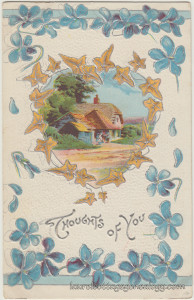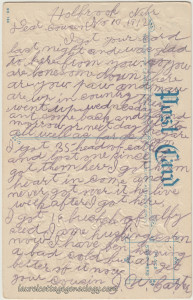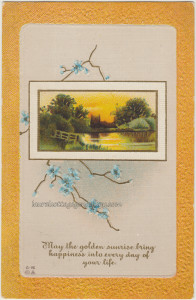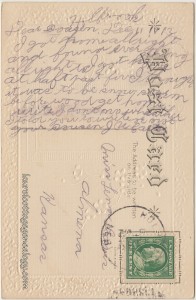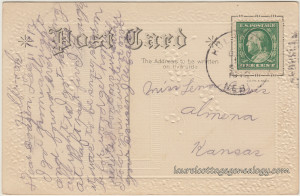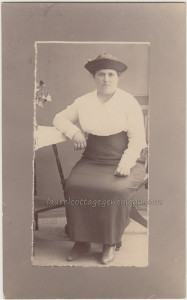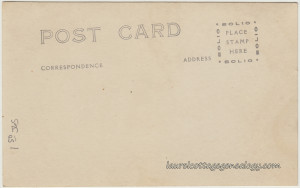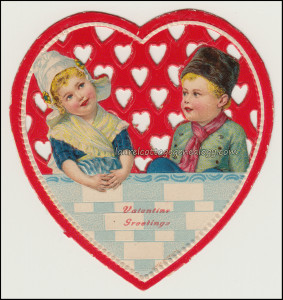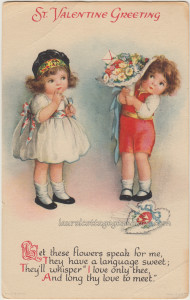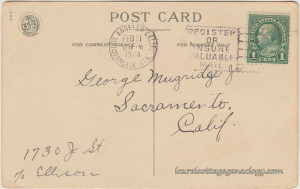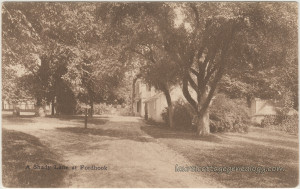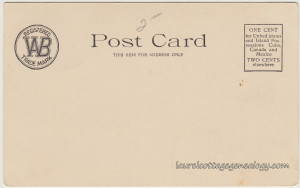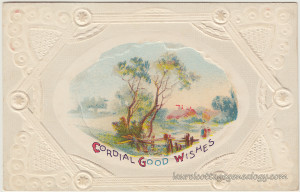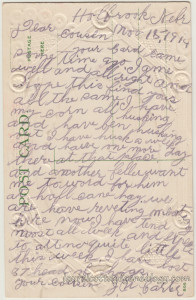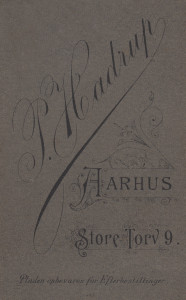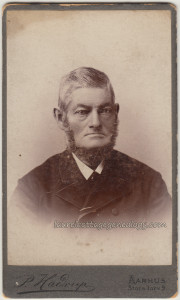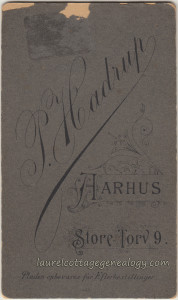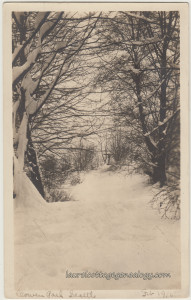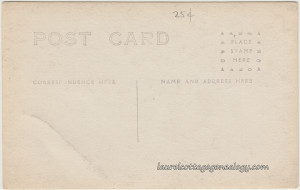“Holbrook Nebr, Nov 10, 1912. I got your card last night and was glad to here from you. You are lonesome down there are you. paw and maw are up in country they went up wednesday and ant come back and tell tomorrow or next day they are all well as far as I no. I got 35 head of cattle and lost one since i got them here. I got him[?] heart in come and never got over it he live week after I got here. I got 16[?] bushel of alfy seed. I ame husking corn now. I have ben having a bad cold but are get better of it now. your cousin J. W. Carter”
A really nice one from J. W. that says a lot, including how he was noticing that Cousin Lena sounded lonesome, Pa and Ma are up in the country, he lost the one cow or bull that sounds like had a heart problem (poor baby), he is busy husking corn, he got what looks like sixteen bushels of alfalfa seed (love the “alfy” expression), and his bad cold is getting better.
This beautiful postcard bearing the inscription “Thoughts of You” shows a thatched roof cottage scene with a visitor being greeted at the door. (If you look closely you will see some figures there.) The heart-shaped scene is surrounded by brown or gold ivy (not sure why the ivy was done in this color but it’s still nice) and then by forget-me-nots. There’s a light blue bar at the top and bottom of the card. The forget-me-nots and ivy are highlighted with silver-tone lines, (a nice departure from the more common gold) and their placement on the card is elegant.
Divided back, embossed, unused with writing. Publisher unknown. No. 184.

